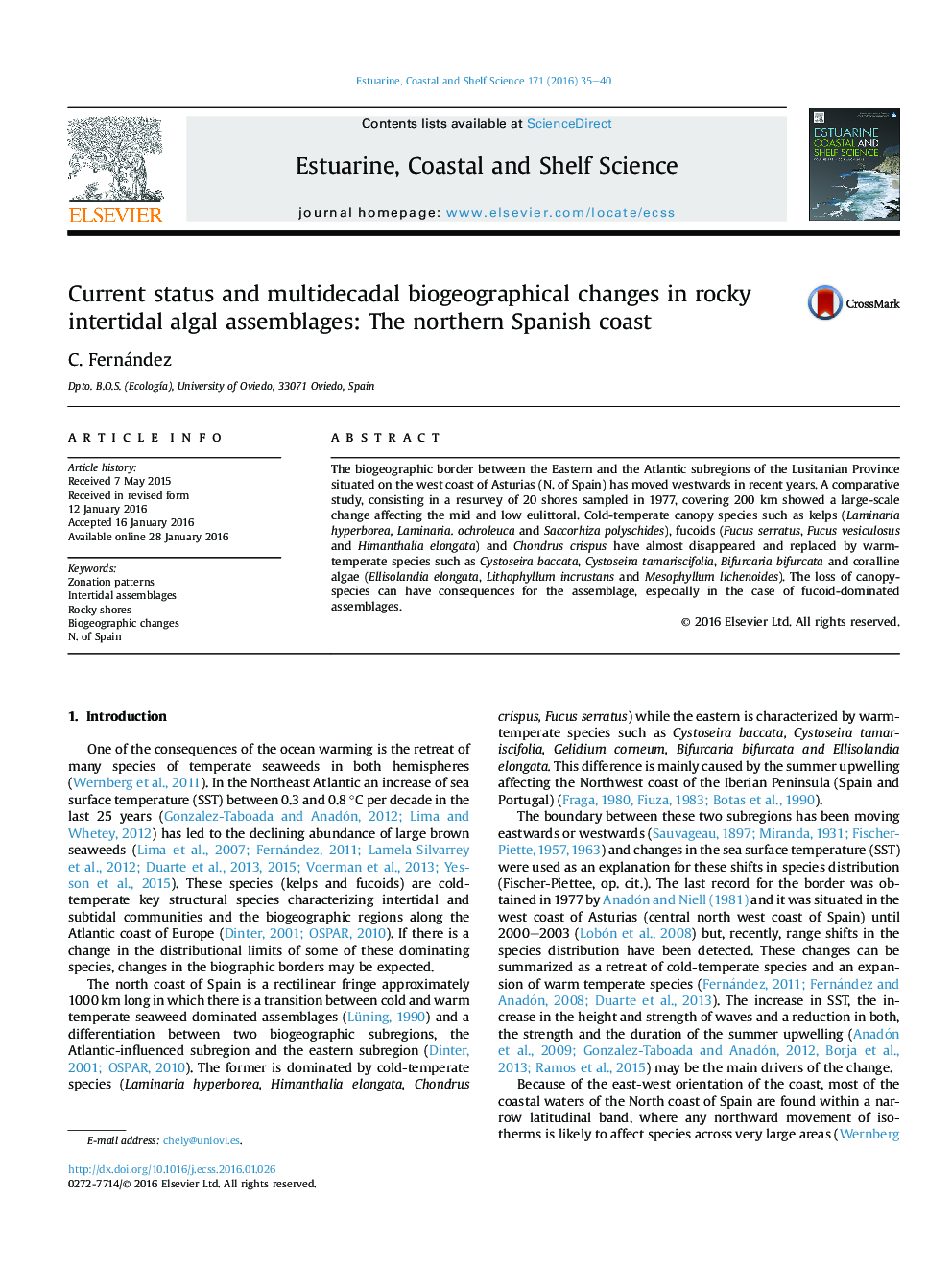| کد مقاله | کد نشریه | سال انتشار | مقاله انگلیسی | نسخه تمام متن |
|---|---|---|---|---|
| 4539279 | 1626628 | 2016 | 6 صفحه PDF | دانلود رایگان |
• Changes in the patterns of zonation over three decades.
• Displacement of the biogeographic border on the North coast of Spain.
• The retreat of cold-temperate seaweeds.
• Changes in the structure of communities dominated by seaweeds.
The biogeographic border between the Eastern and the Atlantic subregions of the Lusitanian Province situated on the west coast of Asturias (N. of Spain) has moved westwards in recent years. A comparative study, consisting in a resurvey of 20 shores sampled in 1977, covering 200 km showed a large-scale change affecting the mid and low eulittoral. Cold-temperate canopy species such as kelps (Laminaria hyperborea, Laminaria. ochroleuca and Saccorhiza polyschides), fucoids (Fucus serratus, Fucus vesiculosus and Himanthalia elongata) and Chondrus crispus have almost disappeared and replaced by warm-temperate species such as Cystoseira baccata, Cystoseira tamariscifolia, Bifurcaria bifurcata and coralline algae (Ellisolandia elongata, Lithophyllum incrustans and Mesophyllum lichenoides). The loss of canopy-species can have consequences for the assemblage, especially in the case of fucoid-dominated assemblages.
Journal: Estuarine, Coastal and Shelf Science - Volume 171, 20 March 2016, Pages 35–40
